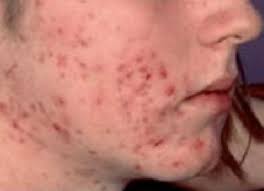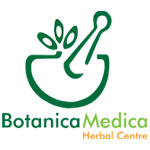
Acne
The Basics
Skin responds wonderfully to the right diet and nutrients which nourish it and make it glow.
Unfortunately dietary changes are not immediately apparent on the skin and often take a minimum of 4 weeks to make a difference and can take up to 3 months.
Though we all suspected it and our mothers told us, it has now been proven that a diet high in sugar will make acne worse. Australian researchers at the Royal Melbourne Institute of Technology (RMIT) found that eating a low glycaemic load diet will improve acne. Actually many research groups have found this to be true around the world. A diet which is high in sugar and simple starches is often associated with high insulin levels or hyperinsulinaemia. This is a situation where the pancreas makes too much insulin in response to carbohydrates but the insulin does not work properly. Usually (when insulin is in balance) it is a great hormone which allows sugar into the cell to be converted to energy. In hyperinsulinaemia the cells don’t recognise the insulin and then conversion of sugar to energy does not occur properly. The pancreas responds simply by making even more insulin.
These high levels of insulin trigger a cascade of other changes including elevated levels of insulin-like growth factor1 (IGF-1). This hormone is a growth factor that signals cells to divide thus stimulating growth in many tissues including the sebaceous follicles (1). The follicles become obstructed due to this excess growth of the keratinocytes (skin cells). Sebum production is increased due to androgen hormones (which are also increased in hyperinsulinaemia) and the follicle is then colonized with specific bacteria called Propionibacterium acnes. Inflammation develops within and around the comedo (pimple).
A proportion of women experience a specific hormonal problem called polycystic ovarian syndrome (PCOS) often related to high insulin levels. Women with PCOS may experience irregular periods, excessive hair growth on the face and acne on the chest, back and face, due to higher testosterone levels.
In study of young adults in Malyasia (2), it was found that milk and ice-cream consumption was associated with a higher incidence of acne and glycaemic load. There have been other studies implicating dairy products with an increase in acne vulgaris including data from the nurses’ health study on 47,355 women who completed questionnaires about diet in their high school years and acne. An association was seen with milk and skim milk and acne. (4)
The Power of orange vegetables containing beta carotene
Retinoids are analogues of vitamin A and can occur naturally or be synthesised. Retinoids reduce cell proliferation of the follicles and in hyperinsulinaemia their effectiveness may be reduced. Beta carotene is found in vegetables and fruits with yellow/orange pigments. It is a precursor of vitamin A and is converted to vitamin A via our liver. Vitamin A is the skin and mucous membrane vitamin. The good news is that the body only converts as much as we need into vitamin A which is much safer to consume beta carotene in our fruit and vegetables than to take vitamin A. Eat plenty of carrots, pumpkin, sweet potato, yellow squash, red capsicum, peaches and apricots as well as spinach and kale.
The importance of zinc
6% of the body’s zinc is found in the skin. It’s an important antioxidant mineral essential for wound healing and skin repair. It’s thought that zinc plays a role in reducing injury during inflammation. In addition zinc is important in reducing the excess production of keratinocytes in acne. (5) Sources of zinc include oysters, lean meat, pumpkin seeds and dark chocolate J
The importance of essential fatty acids
Essential fatty acids are important for moisturising the skin from the inside out and for balancing the sebum production. (Sebum is the body’s natural protective oil which slows water loss from the skin). Interestingly although many people with acne think they have oily skin, most people have a combination of oily and dry skin. Essential fatty acids are protective in that they are antimicrobial and reduce inflammation (6) – very important in acne! Try cold pressed flax oil, olive oil, nuts and seeds, sardines, salmon, avocado, chia seeds and fresh LSA (linseeds, sunflower seeds and almond meal).
Bowel/liver health
A traditional Naturopathic principle is that gut inflammation or dysbiosis can impact on the skin. Elimination is important for clear skin so regular bowel movements daily should be the goal in any skin treatment. Probiotics can improve bowel health and reduce inflammation in the bowel as well as fermented foods such as yoghurt, kefir, sauerkraut. Ensuring plenty of fibre and water in the diet will generally improve bowel function. Fibre from oat bran, psyllium husks and chia seeds is a gentle way to sweep the bowel clean.
In addition to getting the diet and healthy life style right there are specific herbs which can be invaluable in managing hormonal imbalance, reducing sugar cravings, boosting the immune system and assisting healing.
- Berrs .B, Rizzo. A, 2009. Glycaemic index, Glycaemic load and acne. Journal of the American College of Nutrition. :28 (4) 450’s-454’s
- Cordain, L. 2005 Implications for the role of diet in acne. Semin Cutasn Surg. 24:84-91
- Ismail NH, Manaf ZA,Azazan NZ. (2012) High glycaemic load diet, milk and ice cream consumption are related to acne vulgaris in Malaysian young adults: a case control study. BMC Dermatol. 16;(12):13
- Adebamow CA, Speigleman Danby FW, Fraiser AL, Willett WC, Holmes MD.2005. High school dietary intake and Teenager acne. J AM Accad Dermatology. 52(2)207-14
- Shirley SH, Hudson LG, He J,Kusewit DF, The skinny of slug(2010) Molecul Carcinog. Aug 18
- Lee SH, Jeong Sk, Ahn Sk (2006) An update of the defensive barrier function of the skin. Yonsei Med J 30;47(3):293-306

Recent Comments